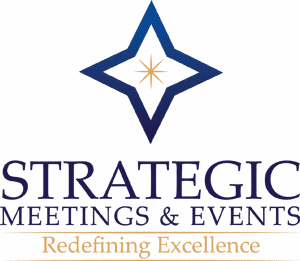Strategic Tips for Planning Your Next Tasting
By Christy Lamagna CMP, CMM, CTSM
People’s palates continue to become increasingly sophisticated and discerning. There are more of us snapping photos of food, enjoying pop-up restaurants and cooking gourmet meals at home (with or without the benefit of the ingredients delivered directly to their door) than ever before. The term ‘foodie,’ which was once reserved for food snobs and the elite, is now a self-proclaimed adjective many of us wear proudly. If you’re new to the world of event food, read on for some helpful strategic tips for planning your next tasting.
Food Tasting – An Essential Part of Preplanning

The change in our relationship to food has been shaped in part by an increased number of people with food sensitivities and/or allergies, a heightened awareness of how food is grown, how animals are raised before coming to market and consciousness about the choices we make and how they affect the planet.
Throw all those factors into a pot, mix well and then multiply by ten, one hundred or one thousand and that’s the number of hungry attendees you are striving to please at your next event. That’s why strategic planners know that food tastings are an essential component of preplanning. What was once a fun (but important) outing to sample a lot of delicious food in the middle of a workday has become a more involved and serious process.
Strategic planners remember that everything event-related must be both goal-oriented and designed with the audience in mind. That means choosing plated meals for formal events, family style service for a networking or more social feel, buffets to allow for a flow, etc. Strategists also know that the menu isn’t about their individual preferences, but that of the audience. So, if you are a light eater planning for an audience of hearty and hungry men, think substantial foods. Or, if you love chocolate you still need to consider a citrus flavored sorbet or a warm pie for the perfect ending to the meal.
For those of you who aren’t doing tastings at all, keep reading. Hopefully, you’ll be persuaded to add them to your SOPs. If you are scheduling tastings but haven’t upped your game to the level of a strategic planner, here are a few strategic tips for planning your next tasting:
1. Remember all those photos people take of food? Your audience is now looking at their plates with a practiced eye. Food presentation is noticed and there is an expectation of creativity. Make sure what you are serving is colorful, three dimensional and carefully plated. A slab of prime rib au jus with a lump of mashed potatoes isn’t going to cut it.
2. At what temperature is the food best enjoyed? Is your program predictable enough that the food you’re choosing can be served at its ideal temperature? If you have erratic content, then filet mignon or other temperature sensitive food may not be the right choice.
3. What is the chef creating for vegans and vegetarians? What menu options are gluten-free? Make sure you are tasting those items as well. What was once the exception is becoming the norm, and everyone deserves the same dining experience. Make sure guests with particular food needs or requests are getting the same attention.
4. Conduct your tasting on a prototype of the table you’ll be using. That means the linens, plates, and centerpieces should be there. The table should be set for the anticipated number of guests per table and with the chairs you’ll be using. This is the moment you realize the colors clash, the florals are too strongly scented, the napkins don’t do their job well enough, the centerpiece is too high for comfortable conversation or the table is too crowded to cut the meat.
5. Think about not just what you are eating but how easy or difficult it is to eat it in the time being allotted. If you spent two hours doing a tasting for a meal that you are giving attendees 30 minutes to eat, you need to rethink your plan.
Food is an integral component of most onsite experiences. Make sure that your tasting factors in the many components of dining so you can deliver beyond expectations.
Become a Strategic Insider to access 10 more strategic tips for planning your next tasting. Click HERE.





